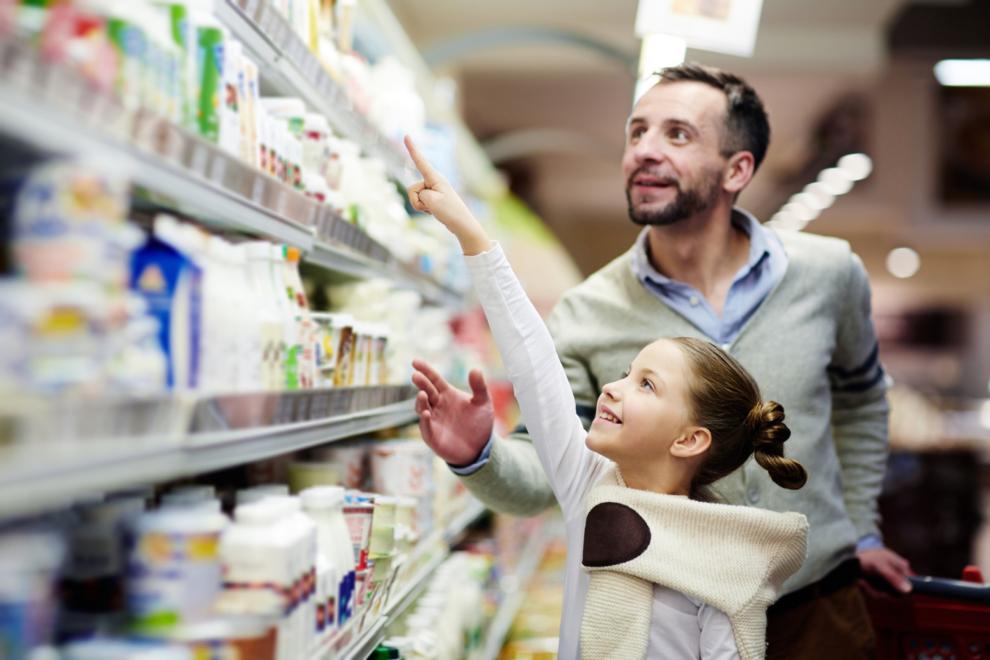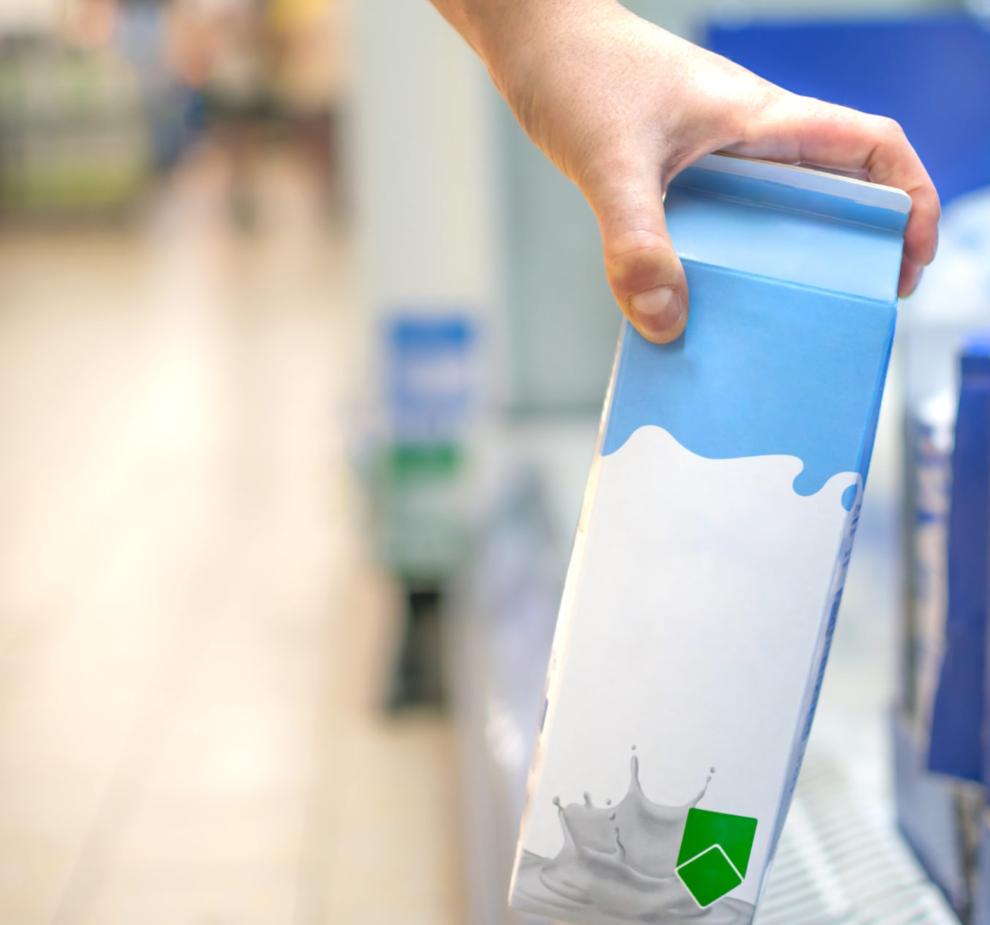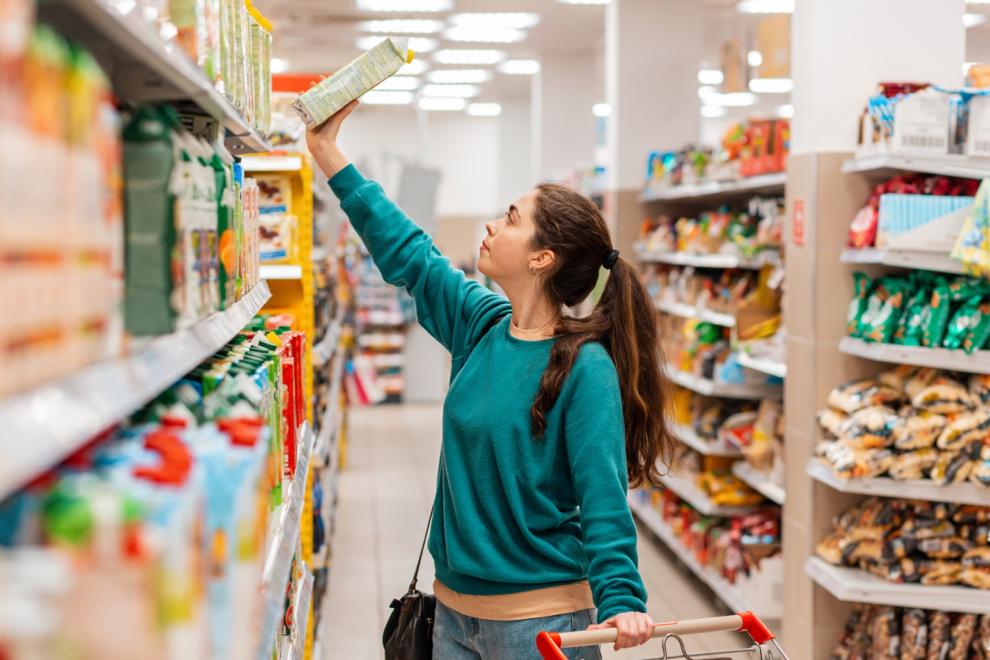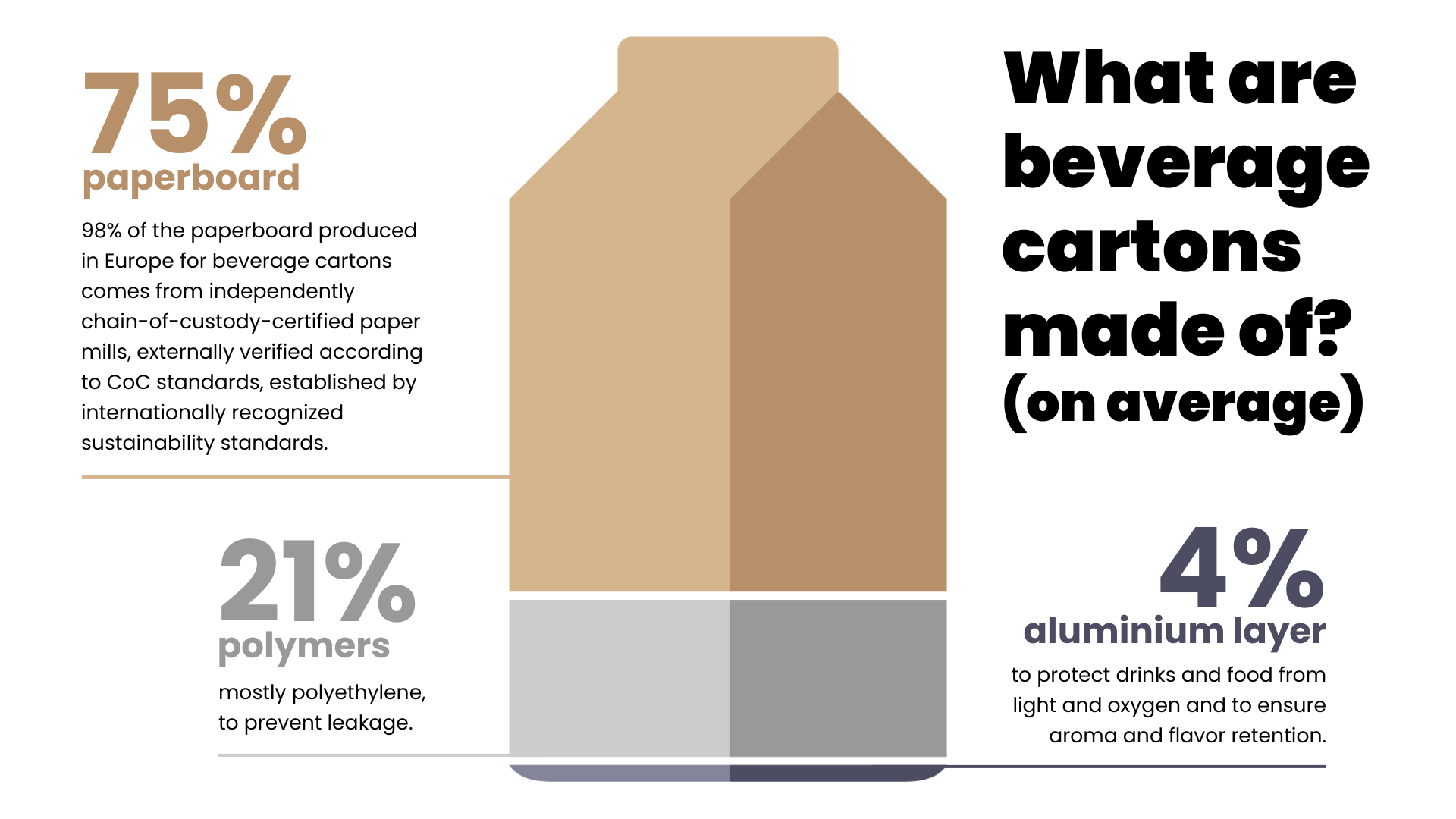Food
In today's diverse packaging landscape, various options are available for food and beverage products. Despite their differences, all packaging serves three essential purposes:
-
Protection
-
Preservation
-
Presentation

Food safety & waste prevention
Food and beverage cartons are primarily made from wood fiber, a renewable resource sourced from sustainably managed forests in Northern Europe, especially Finland and Sweden. About 75% of a carton is made of wood fibers, essential for producing the paperboard.
To ensure safety and extend shelf life, food and beverage cartons include barrier materials like low-density polyethylene (LDPE), which makes up about 20% of the carton. LDPE prevents moisture from entering or exiting, keeping contents fresh. Aseptic cartons also use aluminium as a barrier against oxygen and light, with much of its production energy coming from hydropower.
Additionally, food and beverage cartons feature a plastic closure made from high-density polyethylene (HDPE), accounting for about 5% of the packaging. This allows the carton to be resealed, preserving freshness.

Protecting & preserving your food
These cartons protect food and beverages from degradation while preserving essential qualities like flavor and nutrients. They are a sustainable, low-carbon, recyclable packaging solution suitable for various products. For example, aseptic cartons enable items like UHT milk to be stored for up to six months without refrigeration, reducing energy use and carbon emissions. By extending shelf life and preventing spoilage, food and beverage cartons play a crucial role in reducing food waste and supporting sustainability.

